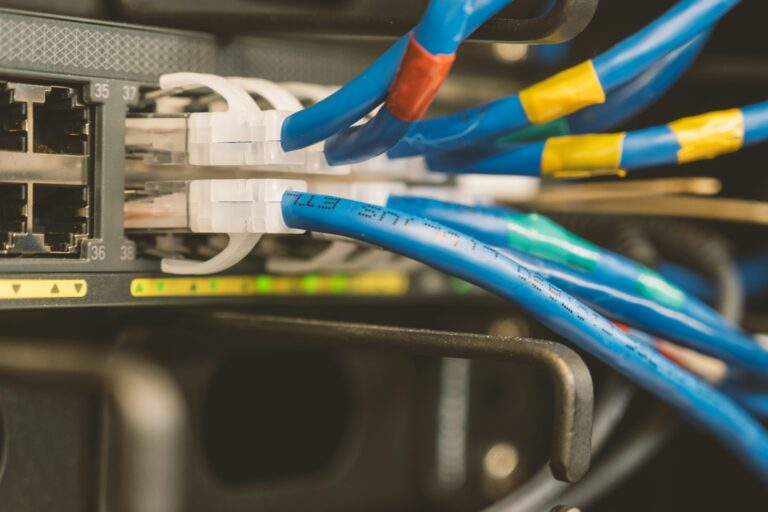Introduction
LAN cables might seem boring compared to flashy routers and mesh systems, but they’re the foundation of everything. I’ve spent over a decade troubleshooting networks, and I can’t count how many “mysterious” connection issues disappeared after swapping out a cheap cable.
Whether you’re building a home office that actually works, setting up a gaming rig that won’t let you down, or just sick of your Netflix freezing mid-episode, this guide will save you time, money, and a lot of frustration.
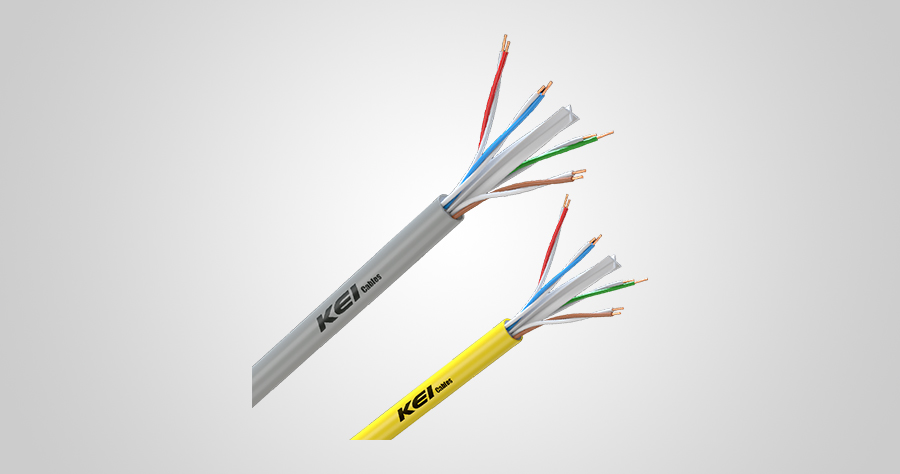
What Are LAN Cables and How Do They Work?
LAN Cable Basics: Beyond the Jargon
Think of a Local Area Network (LAN) cable as your data’s personal superhighway. Instead of cars, you’ve got bits and bytes racing between your devices at incredible speeds. But unlike a regular highway where traffic can back up, this four-lane system keeps different types of data separated—uploads in one lane, downloads in another, with control signals managing the whole show.
Here’s something cool: most ethernet cables use twisted pair technology that’s actually genius in its simplicity. Inside that plastic jacket, you’ll find four pairs of copper wires twisted together. This isn’t some random design choice—those twists are precisely calculated to cancel out electromagnetic interference.
Picture two kids on a seesaw. When one goes up, the other goes down. That’s exactly how twisted pairs work with interference—they balance each other out. The tighter and more consistent those twists, the cleaner your signal integrity stays over long distances.
When you snap that RJ45 connector into your router, you’re not just making a connection—you’re creating a dedicated data pipeline. While Wi-Fi shouts your data across the room where anyone can intercept it, wired networks whisper directly into the right ear. That’s why security-conscious businesses still run cables everywhere.
The Science Behind Network Connectivity
Your data moves fast through these cables—really fast. We’re talking about electrical signals zipping along at roughly 200 million meters per second through quality copper conductors. To put that in perspective, your email could theoretically circle the Earth in less than a second.
But speed isn’t everything. Bandwidth and frequency team up to determine how much information you can cram through that cable. A Cat6 cable humming along at 250 MHz can theoretically push 10 Gbps—that’s enough to transfer a full HD movie in about three seconds.
Reality, however, loves to crash the party. Your actual performance depends on factors most people never consider: how you manage your cables, crosstalk between wire pairs (yeah, they can interfere with each other), and whether you skimped on those connectors.
Shielding becomes crucial in noisy environments. UTP (Unshielded Twisted Pair) cables work great in typical homes where the biggest interference comes from your microwave. But step into a server room with dozens of switches humming away, or an industrial setting with heavy machinery, and you’ll want STP (Shielded Twisted Pair) or FTP (Foiled Twisted Pair) cables protecting your signals.
I learned this the hard way during a hotel renovation project. We installed beautiful Cat6 cables throughout, but guests complained about spotty internet. Turns out, we’d run cables right next to the elevator motor. One weekend with shielded cables solved months of headaches.
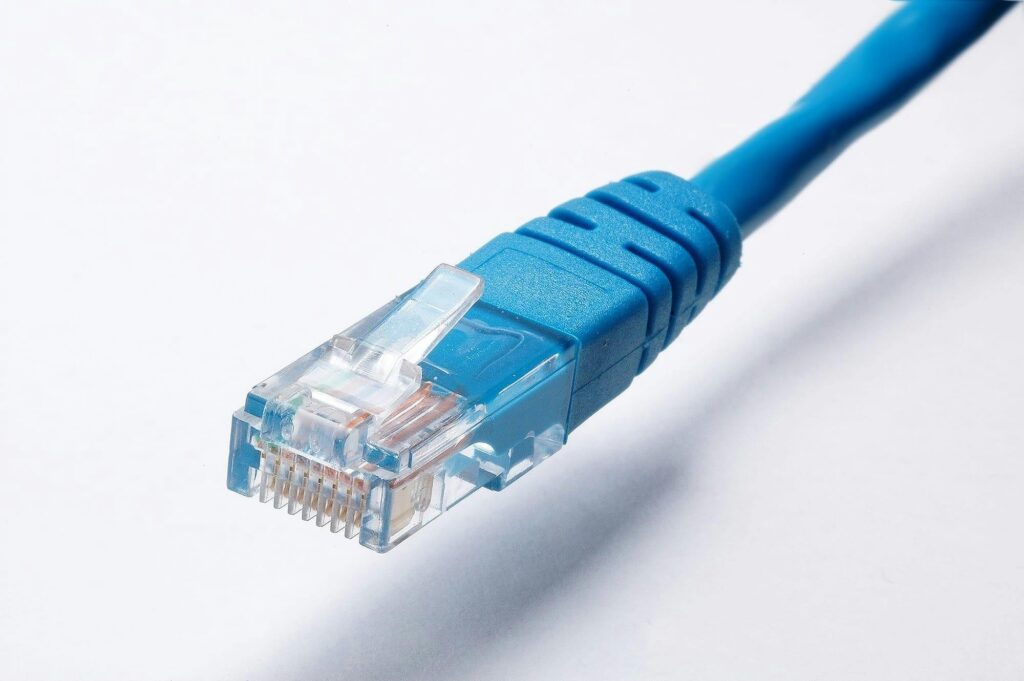
Complete Guide to LAN Cable Types and Categories
Ethernet Cable Categories Decoded (Cat5 to Cat8)
Let me break down the ethernet cable categories without drowning you in technical specs. Each jump in category represents real-world improvements you can actually feel.
| Cable Type | Max Speed | Max Distance | Frequency | Sweet Spot Usage |
| Cat5e | 1 Gbps | 100m | 100 MHz | Basic home networks |
| Cat6 | 10 Gbps* | 55m | 250 MHz | Gaming, streaming setups |
| Cat6a | 10 Gbps | 100m | 500 MHz | Future-proof installations |
| Cat7 | 10+ Gbps | 100m | 600 MHz | Challenging environments |
| Cat8 | 40 Gbps | 30m | 2000 MHz | Data center short runs |
*Cat6 hits 10 Gbps only up to 55 meters—beyond that, speeds drop
Cat5e remains the workhorse for most homes. It’ll handle your gigabit internet plan without breaking a sweat. If you’re not planning major upgrades and your runs are under 300 feet, Cat5e gets the job done.
But here’s where I always push clients toward Cat6—it’s not much more expensive, and the performance headroom is worth it. When you’re fishing cables through walls, the last thing you want is to do it twice.
Cat6a is where things get interesting. That little “a” stands for “augmented,” and boy, does it deliver. Full 10 Gbps over 100 meters means you’re set for whatever internet speeds become available in the next decade. For home offices pushing large files or families with multiple 4K streams, it’s money well spent.
Cat7 and Cat8? Unless you’re building a data center or running a cryptocurrency mining operation in your basement, you’re probably overkilling your needs. I’ve seen people spend hundreds extra on Cat8 cables for their home Netflix setup. That money could’ve bought a lot of popcorn.
Fiber Optic vs. Copper: When to Choose What
Fiber optic cables are the Ferraris of the data world. They use light pulses instead of electrical signals, achieving speeds that make even Cat8 look slow. We’re talking 100 Gbps and beyond, with virtually no signal loss over massive distances.
But here’s the reality check: most homes don’t need Ferrari performance, and they definitely don’t want Ferrari prices. The equipment costs alone will make your wallet cry. Plus, you can’t run Power over Ethernet (PoE) through fiber, which means separate power supplies for security cameras, wireless access points, and other devices.
Copper ethernet cables handle 99% of residential needs beautifully. They’re affordable, work with all your existing equipment, and any decent electrician can install them. I only recommend fiber when you’re running cables over 1,000 feet, need ridiculous speeds throughout a large property, or live next to a radio tower.
Shielded vs. Unshielded: Cutting Through the Confusion
Unshielded twisted pair (UTP) cables work perfectly in typical homes and offices. Those twisted wire pairs provide solid protection against crosstalk and interference for normal applications.
Shielded cables wrap those wire pairs in metallic foil or braided mesh. They shine in challenging situations:
- Server rooms packed with equipment generating electromagnetic noise
- Industrial environments with motors, welders, and heavy machinery
- Dense office buildings where hundreds of network cables run through the same areas
However, there’s a catch with shielded cables—they need proper grounding to work correctly. I’ve seen installations where incorrect grounding actually made interference worse, not better. If you’re not sure about the electrical aspects, stick with UTP for most applications.
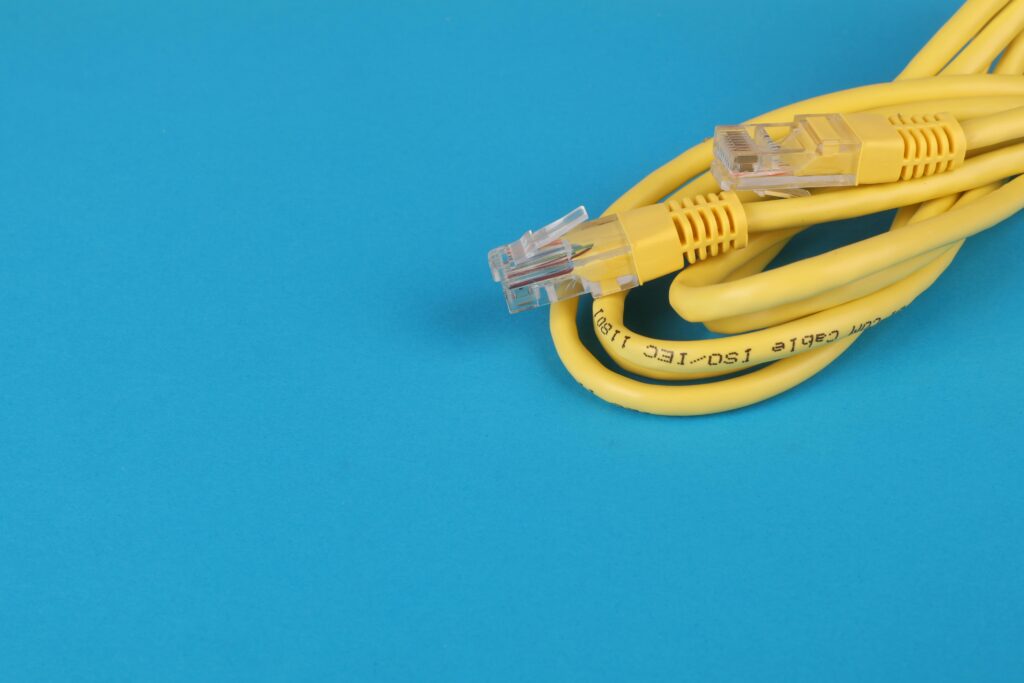
How to Choose the Perfect LAN Cable for Your Needs
Speed Requirements: Matching Cables to Your Internet Plan
Your internet connection speed should definitely influence your cable choice, but don’t get caught in the “bigger is always better” marketing trap. Here’s how to think about it practically:
Internet speeds up to 100 Mbps: Cat5e handles this with room to spare. You literally won’t see any performance difference with higher categories. Save your money for other upgrades.
Gigabit internet (1000 Mbps): Cat5e technically works, but Cat6 provides better signal integrity and some future-proofing. Since you’re making the investment anyway, go with Cat6.
Multi-gigabit internet (2.5-10 Gbps): Now you need Cat6a or higher. These plans are rolling out in major cities, and early adopters always benefit from getting ahead of the curve.
Here’s something important: your router, switch, and connected devices must also support higher speeds. I’ve seen people install Cat8 throughout their house, then wonder why their five-year-old laptop still gets the same speeds. Your network is only as fast as its slowest component.
Distance and Environmental Factors
Cable length affects performance more than most people realize. Ethernet standards didn’t pick those maximum distances randomly:
- Cat5e/Cat6: 100 meters (328 feet) for full gigabit speeds
- Cat6: Only 55 meters (180 feet) for 10 Gbps performance
- Cat6a: Full 100 meters at 10 Gbps—this is why it costs more
Environmental considerations can make or break your installation:
Temperature swings affect conductor performance. I’ve troubleshot networks where cables ran through unconditioned attics. Summer heat degraded performance until we switched to outdoor-rated cables with better temperature tolerance.
Physical protection matters in high-traffic areas. Patch cables work fine for desktop connections, but permanent wall installations need solid core conductors that can handle being stapled and routed through tight spaces.
Electromagnetic interference from fluorescent lights, motors, or radio equipment can turn your network into a frustrating mess. When separation isn’t possible, shielded cables or alternative routing become necessary investments.
Budget-Smart Shopping: Getting the Best Value
Quality copper ethernet cables don’t require a second mortgage, but knowing what affects price and performance helps you shop smart:
Conductor material makes a huge difference. Pure copper conductors outperform copper-clad aluminum (CCA) in every way. CCA cables cost less upfront but have higher resistance, run hotter, and fail sooner. It’s classic “buy cheap, buy twice” territory.
AWG (American Wire Gauge) numbers work backwards—lower numbers mean thicker wires. 24 AWG provides better performance than 26 AWG, especially over longer distances. The difference becomes noticeable on runs over 150 feet.
Build quality separates the good from the garbage. Cheap cables often use flimsy connectors that fail within months. Look for gold-plated RJ45 plugs and proper strain reliefs. Your future self will thank you.
Certification matters for performance guarantees. Cables that meet TIA/EIA standards undergo actual testing. Uncertified cables might work initially but could fail under stress.
Expect to pay $0.50-$1.50 per foot for solid Cat6 cable. Cat6a runs $1-$2 per foot. Anything significantly cheaper is probably cutting corners somewhere—materials, construction, or testing.
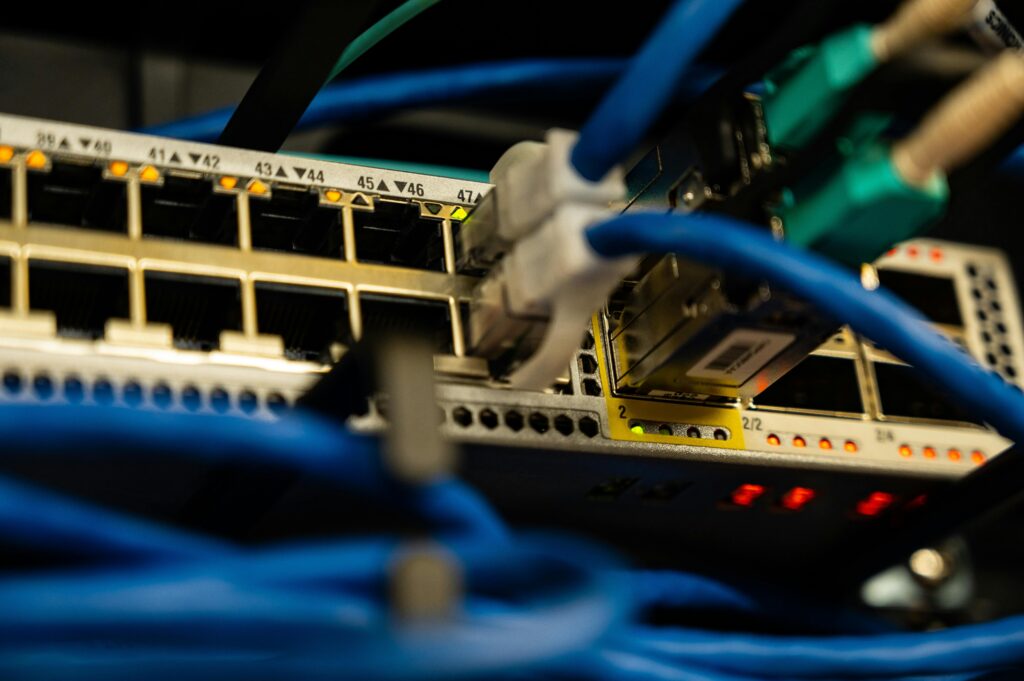
Professional Installation Tips and Best Practices
DIY Installation: Step-by-Step Walkthrough
Installing ethernet cables isn’t rocket science, but the difference between professional and amateur results comes down to attention to detail.
Essential tools:
- Cable stripper or very sharp knife (dull blades damage conductors)
- Crimping tool for RJ45 connectors (don’t cheap out here)
- Cable tester (basic ones cost $15-20 and save hours of troubleshooting)
- Wire management clips and velcro ties
- Punch-down tool for wall jacks and patch panels
Installation process that actually works:
- Plan your route like your sanity depends on it. Avoid running cables parallel to electrical wiring whenever possible. When you must cross electrical cables, do it at 90-degree angles to minimize interference.
- Respect bend radius specifications religiously. Cat6 cables should never bend tighter than four times their diameter. I’ve seen people fold cables into impossible origami shapes, then wonder why their speeds are terrible.
- Leave service loops at both ends. That extra cable length makes future changes possible and accommodates equipment moves without re-running everything.
- Test everything before closing up walls or cable runs. A $15 cable tester catches problems that could cost hundreds to fix later.
Common Installation Mistakes That Kill Performance
Overtightening zip ties is probably the mistake I see most often. Compressed cables lose their internal geometry, leading to crosstalk and speed issues. Use just enough tension to keep cables organized—they’re not going anywhere.
Mixing cable categories within the same network path creates frustrating bottlenecks. Your network performs only as well as its weakest link. Connecting Cat8 equipment through Cat5e cables is like putting a Ferrari engine in a golf cart.
Poor termination techniques cause more headaches than bad cables. T568B wiring standard dominates North America. Keep wire twist patterns as close to the connector as possible—every millimeter of untwisted wire creates interference opportunities.
Running power and data cables together is asking for trouble. 60 Hz electrical interference can overwhelm ethernet signals, especially near high-power circuits. Maintain at least 6 inches of separation, or use shielded cables when separation isn’t feasible.
Testing and Troubleshooting Your Network
Speed testing reveals cable problems quickly, but don’t rely solely on internet speed tests—they measure your ISP connection, not internal network performance.
Use iperf3 or similar tools to test LAN speeds between devices. Gigabit ethernet should sustain 940+ Mbps in real-world conditions. Significantly lower speeds point to cable, connector, or equipment issues.
Cable testers range from simple continuity checkers ($15) to professional certification testers ($2,000+). For home use, a basic tester checking wire mapping and length catches 90% of installation problems.
Troubleshooting common symptoms:
- Intermittent connections: Usually loose connectors or physically damaged cables
- Slow speeds: Often crosstalk from damaged wire pairs or poor terminations
- No connection: Typically incorrect wiring pinout or completely broken conductors
- Frequent disconnections: Marginal connections from corrosion, wear, or poor contact
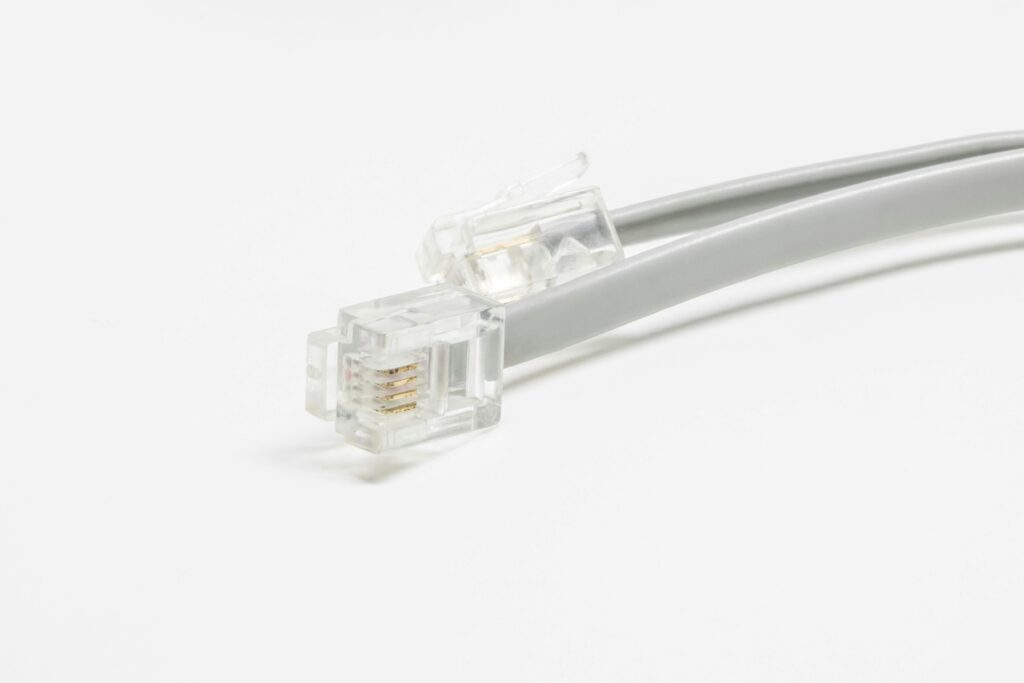
Real-World Performance Comparisons and Case Studies
Home Network Scenarios: What Actually Works
Case Study 1: Sarah’s Gaming Revolution
Sarah called me frustrated with her gaming setup. Her 200 Mbps internet worked fine for browsing, but latency spikes during online gaming were ruining her experience. Wi-Fi seemed fast enough for everything else.
The problem? Wi-Fi latency varies wildly based on interference, other devices, and even physical movement. Gaming needs consistent, predictable response times.
Solution: One Cat6 cable from router to gaming PC changed everything. Ping times dropped from a variable 15-45ms to a rock-solid 8ms. Total cost: $25 for 25 feet of cable.
Lesson learned: Wired connections provide the consistent latency that competitive gaming demands. Wi-Fi is fine for casual use, but serious gamers need cables.
Case Study 2: The Johnson Family Network Nightmare
The Johnsons struggled with 4K streaming interruptions every evening when the whole family got online. Their expensive mesh Wi-Fi system couldn’t handle peak demand with multiple devices competing for wireless bandwidth.
The real issue? Wireless bandwidth is shared among all devices, creating congestion during peak usage. Even the best mesh systems have limits.
Solution: Cat6a backhaul between mesh nodes plus wired connections for bandwidth-heavy devices (smart TV, gaming consoles). This freed up wireless capacity for mobile devices that actually need it.
Results: No more streaming buffering, faster overall network response, and fewer family arguments. Installation cost: $150 for cables and wall jacks.
Case Study 3: Remote Work Reality Check
Mark’s home office suffered frequent video call dropouts during client presentations. Nothing’s more embarrassing than disappearing mid-sentence during important meetings.
Investigation revealed his Cat5e cable tested fine for download speeds but struggled with simultaneous upload/download during video conferences. The cable was technically working but not optimally.
Solution: Cat6 cable improved bidirectional performance and signal integrity. Adding UPS battery backup for modem and router eliminated dropouts during brief power fluctuations.
Outcome: Reliable video calls, improved professional image, and peace of mind during presentations.
Business Network Applications
Small office requirements differ significantly from residential needs. Cable management, scalability, and future-proofing become more important than absolute cost savings.
Structured cabling using patch panels and keystone jacks provides flexibility for office reconfigurations. Cat6a throughout ensures infrastructure supports equipment upgrades for years without rewiring.
Enterprise environments demand certified installers and comprehensive testing. Cable certification documents performance and provides warranty coverage for the entire system. When your business depends on network reliability, professional installation pays for itself.
FAQ’s
What’s the difference between Cat6 and Cat6a for gaming?
Cat6 handles gaming perfectly for distances under 180 feet. Cat6a provides identical gaming performance but costs 30-50% more. Save your money unless you’re planning future network upgrades to multi-gigabit speeds. Your reaction times won’t improve with more expensive cables.
Can I use Cat5e cable for 4K streaming?
Absolutely. Cat5e easily handles 4K streaming. A single 4K stream uses about 25 Mbps, well within Cat5e’s gigabit capability. Multiple simultaneous streams work fine too. However, Cat6 provides better signal integrity if you’re installing new cables anyway.
How long can I run ethernet cable without losing speed?
Ethernet standards specify 100 meters (328 feet) maximum for Cat5e through Cat6a. Beyond this distance, you’ll need switches, repeaters, or fiber optic solutions to maintain performance. Don’t try to push these limits—they exist for good reasons.
Do expensive LAN cables really make a difference?
Quality matters infinitely more than price. Expensive cables with fancy marketing don’t perform better than properly made standard cables meeting specifications. Focus on copper purity, build quality, and proper certification rather than premium branding or gold-plated everything.
Why is my LAN cable not working?
Common causes: incorrect wiring pinout, damaged connectors, broken conductors, or incompatible equipment speeds. A basic cable tester identifies most issues quickly. Physical damage from sharp bends or crushing is surprisingly common.
Should I upgrade all my cables when I upgrade my internet speed?
Only if your current cables create bottlenecks. Cat5e handles up to gigabit speeds perfectly. Upgrade to Cat6 or higher only when moving to multi-gigabit internet plans. Your money is better spent on other network improvements most of the time.
How do I know if my ethernet cable is causing slow speeds?
Test LAN speeds between devices using tools like iperf3. If LAN speeds significantly exceed your internet speeds, cables aren’t the problem. If LAN speeds are slow, investigate cables, connectors, and network equipment systematically.
Future-Proofing Your Network: What’s Next?
Emerging Technologies and Standards
Cat8 represents the current peak of copper ethernet technology. However, its 30-meter distance limitation and enterprise pricing make it impractical for most residential applications. It’s a solution looking for a problem in home environments.
Power over Ethernet (PoE) keeps expanding capabilities. PoE++ can deliver up to 100 watts—enough for wireless access points, security cameras, and even LED lighting. This technology requires copper conductors, which is another reason fiber hasn’t completely replaced ethernet.
2.5 Gigabit and 5 Gigabit ethernet are becoming mainstream options. These speeds work over existing Cat5e and Cat6 installations, providing upgrade paths without complete cable replacement. It’s the sweet spot between cost and performance for many applications.
Smart Home Integration Considerations
IoT devices generally don’t need high-speed connections, but network reliability becomes absolutely crucial. Wired backbones supporting wireless access points provide better coverage and performance than purely wireless solutions.
Home automation systems benefit from wired connections for critical components like security panels and lighting controllers. Wireless works fine for sensors and switches, but core infrastructure should be hardwired for reliability.
Mesh networking with wired backhaul offers the best of both worlds—wireless convenience where you need it, wired performance where it matters most. This hybrid approach maximizes both flexibility and reliability.
Conclusion
Your LAN cable choice ripples through everything from gaming performance to work-from-home productivity. Cat5e handles most current needs adequately, Cat6 provides future-proofing at reasonable cost, and Cat6a ensures you’re ready for next-generation internet speeds.
The best ethernet cable matches your actual needs, not marketing promises or peer pressure. Focus on quality copper, proper installation, and realistic performance expectations. Your network will reward you with years of reliable service and fewer headaches.
Remember, cables are infrastructure—they should disappear into the background and just work. When they do their job properly, you’ll forget they exist. That’s exactly what you want.
Got specific questions about your networking setup? Drop a comment below—I genuinely read and respond to every one. Let’s get your network running at its full potential without breaking the bank.
